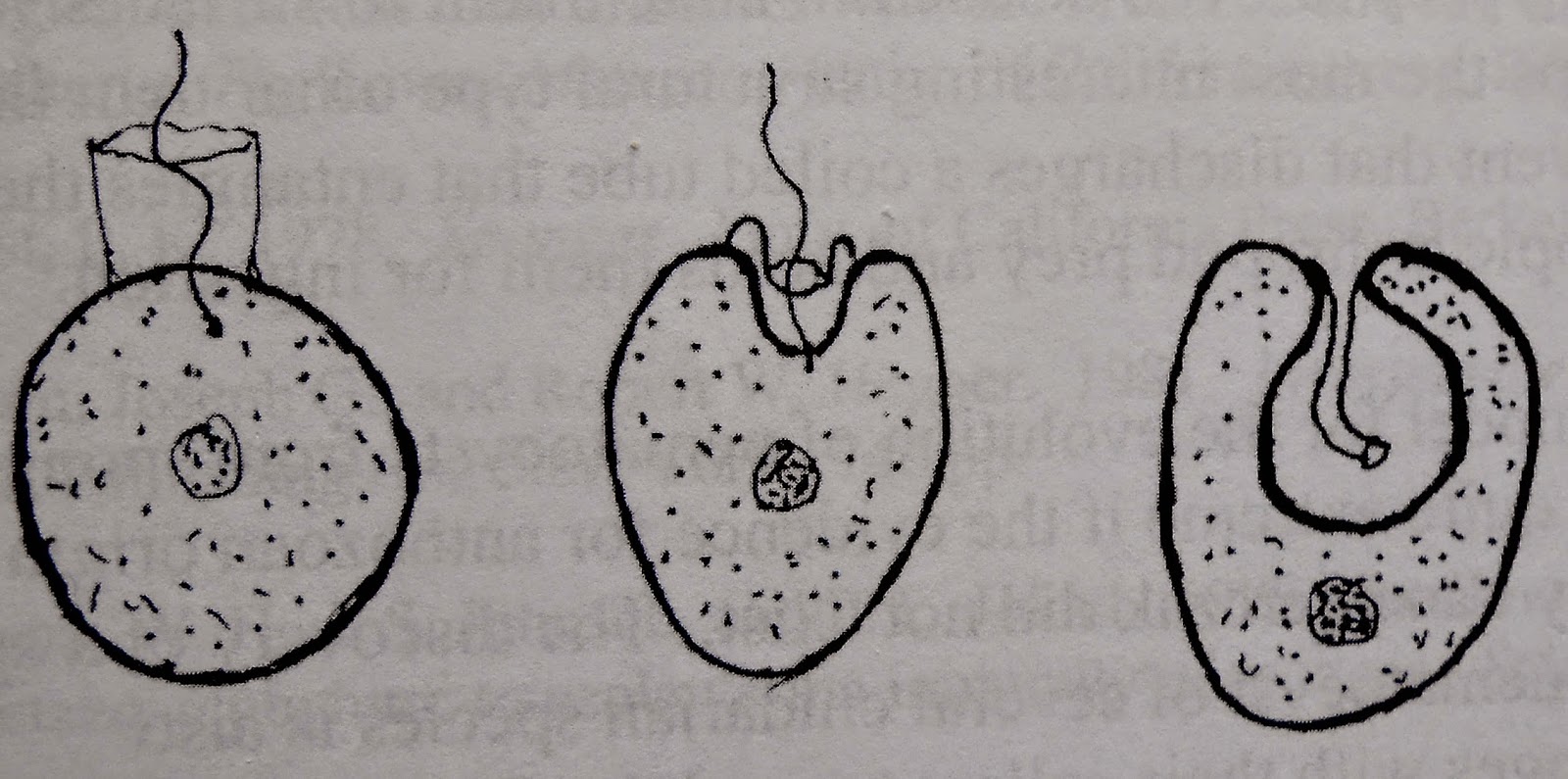The previous post described a possible link between sponges and cnidarians that had previously been alluded to in a post on July 18, 2013. In a post before that, I had listed references helpful in understanding the protostome-deuterostome link. But none to date have mentioned the following reference.
Wainright, Patricia O., Gregory Hinkle, Mitchell L. Sogin, and Shawn K. Stickel. 1993. Monophyletic Origins of the Metazoa: An Evolutionary Link with Fungi. Science, 260:340-342.
Their abstract contains the statement that they inferred from their data "that the animals and fungi share a unique evolutionary history and that their last common ancestor was a flagellated protist similar to extant choanoflagellates." I had not annotated their article in my reference list and just this week ran across the issue with it while looking for something else.
ANIMAL ROOTS
All groups of living organisms were undoubtedly very closely related in their early beginnings. But their work was probably part of my subconcious in noting the amoeboflagellates were likely precursors of choanoflagellates and the colonial Proterspongia leading to the sponges.
Proterospongia, a likely intermediate between choanoflagellates and sponges.
Mastigamoeba, a flagellated, amoeboid protozoan perhaps ancestral to Proterospongia.
The evidence for relationships of plants, fungi, and animals is not very clear. In that early cluster of living forms, before simple animals and simple plants evolved along with fungi, many overlapping and/or shared features existed. Wainright et al. did a fine job of using multiple characteristics in their analysis, but a few differences in loss or retention of features could modify the result considerably. Still their analysis is perhaps the best available given the problems created by thinking used in molecular phylogenies noted in my May 31, 2013 post, "Science screw-up No. 1".
If you are new to this blogsite, the most important new information is scattered through evolution posts attempting to show the unique importance of the Pogonophora in understanding variable rates of evolution and the close link of deuterostomes, such as chordates, to annelid ancestors. That link was first suggested over a century ago but rejected successively by faulty application of embryological theory, and then by molecular genetic errors as noted in the post referenced in the preceding paragraph. So you can search through my posts on annelid theory to get the evidence.
Joseph G. Engemann April 26, 2015



